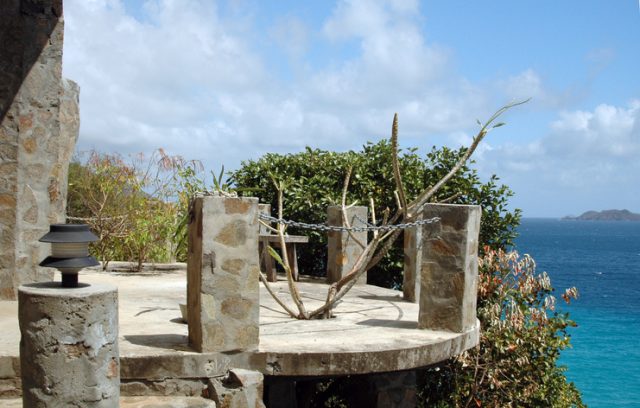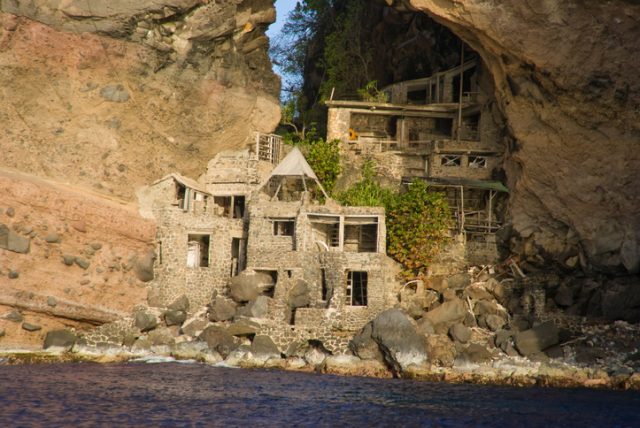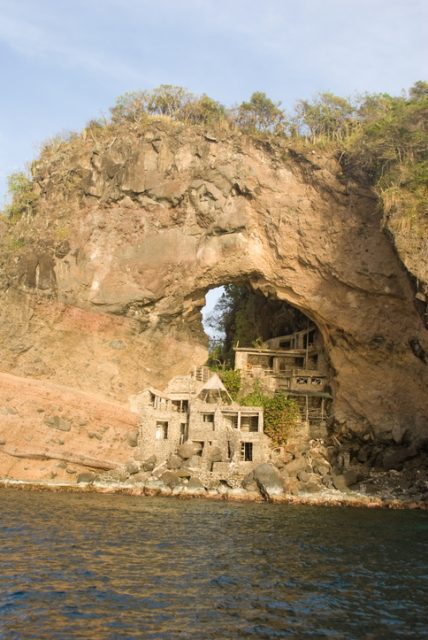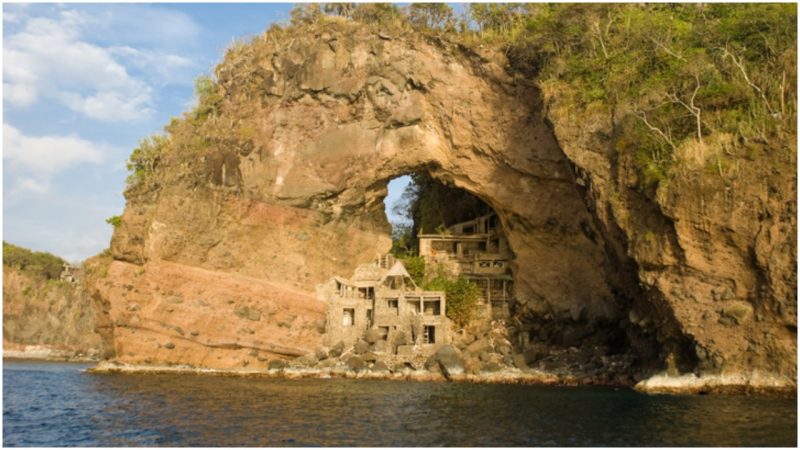It sounds like the perfect 1960’s fever-dream house: a multilevel dwelling set in a giant rock hole in a massive stone arch overlooking the clear blue Caribbean Sea on the island of Bequia, the largest of the Grenadines, through which an inhabitant could sometimes view the rising moon. Even its name was evocative of the era: Moonhole.
The fantasy house was the work of a pair of escapees from the advertising industry, where they had lucrative jobs. Thomas and Gladys Johnston decamped from Chicago and New York to the seven-mile-square island when he was in his 50s and she in her 40s.
“Tom is always full of surprises,” Gladys Johnston told the New York Times in 1975. “Moonhole was one of the biggest.”
When the couple arrived in the early 1960s, they got to know the lay of the land by managing a small hotel for $60 a month and meals. Thomas was on a walk one day when he discovered the area he would call Moonhole. “I walked and crawled through the briars for two and a half hours and decided I had to have it,” he told the New York Times.
He returned with Gladys for afternoon picnics. It took him a while to convince his dubious wife, but eventually, they bought the natural formation along with 30 surrounding acres for less than $15,000.

Tom Johnston had no formal training as an architect. He’d managed to talk his way into Princeton but hadn’t come away with a degree. But the former advertising executive was able to talk pretty much anybody into anything—including a skeptical wife, not to mention the incredulous locals.
Tom believed that a house should be designed so its occupants could look and live outward. And so, local builders reinforced concrete slabs with iron bars to construct a series of rock and concrete chambers connected by stone catwalks and raised platforms, some of them without roofs, around trees and outcroppings. “Windows” were of many sizes; floors were uneven. The natural rock walls twisted and bulged. Whale bones formed frame bars, chairs, and coffee tables. Anchor chain served as railing; masts and hatch covers as beams and doors.

Locals watched the construction with mocking disbelief that transformed along with the landscape into admiring envy. “Before I couldn’t believe anyone would live there,” a fisherman told the New York Times in 1975. “Now I wish I could afford it.”
Needless to say, there was no electricity or running water, unless you count the ocean outside the door. Rainwater that collected off pitched walls and floors into cisterns was used for drinking and bathing. The only way to reach the structure was by boat or a hilly hike. Food and drink were kept cool in propane-operated refrigerators. Gladys even had a second-hand piano lugged in. Eventually, 16 separate structures were constructed on the site.

“People think they’re old ruins,” Tom’s father, Jim Johnston, told the New York Times in 2004. “But they just look that way.”
Moonhole wasn’t free of hazards. Gladys was on a balcony one day when two boulders came crashing down off the cliffside. She was unhurt, but the structure had to undergo repairs. Thankful for the continued workmanship of local skilled laborers, Tom and Gladys set up Moonhole Friends to provide assistance for medical and educational expenses.

Tom Johnston died in 2001, and left his trust in Moonhole Company Limited. Without his force-of-nature personality, the eco-paradise fell into disuse and disarray. Legal battles over ownership and upkeep ensued.
Today, Moonhole is a private nature reserve. The original Moonhole house is uninhabitable and can be viewed only from the sea. But eight of the original houses have been rehabilitated and are available as weekly, monthly, or seasonal rentals, complete with a dedicated housekeeper and cook. And of course, there’s always the sound of the crashing ocean and the chance of seeing a rising moon.
